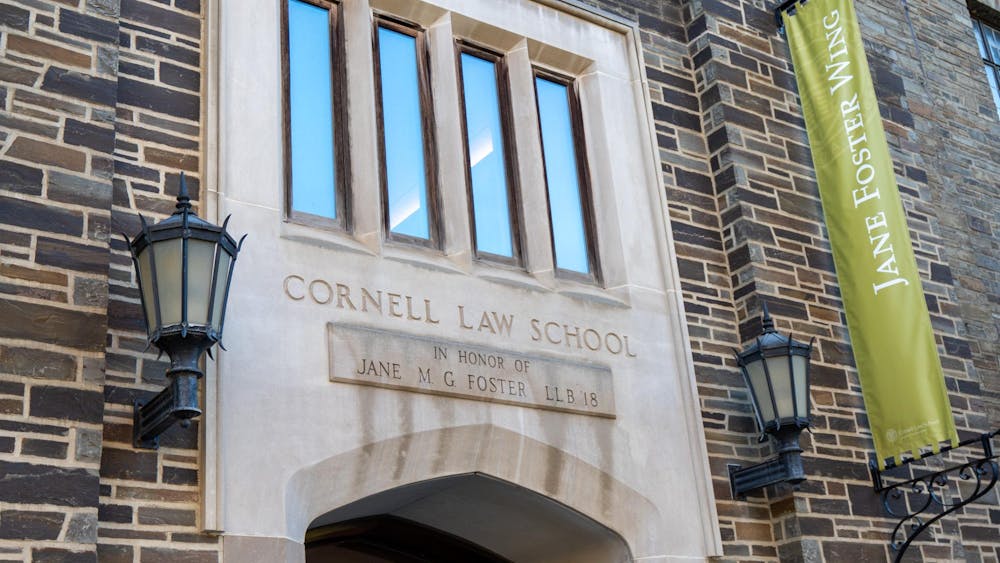The Europa Clipper is a flagship National Aeronautics and Space Administration mission to investigate the habitability of Jupiter’s moon Europa. Scientists think that Europa’s icy surface may hide deep oceans holding the ingredients for life.
The Europa Clipper launch was initially scheduled for Thursday, Oct. 10, but NASA postponed the launch in anticipation of Hurricane Milton. Several Cornell faculty members, graduate students and research associates have contributed to the mission’s scientific and technical development.
“While it's always disappointing to have a setback, we have a 30-day launch window, so we are not at risk of having to scrap the launch altogether,” wrote Ph.D. student Jorge Coppin-Massanet in an email statement to The Sun. “Hopefully this does not take away any momentum from the excitement we've been building up and nobody is greatly affected by Milton.”
NASA’s Europa Clipper carries nine science instruments, each playing a different role in collecting information about the icy moon. After its launch at NASA’s Kennedy Space Center in Merritt Island, Florida, the clipper will spend six years traveling to Europa. Once it arrives, the spacecraft will orbit Jupiter, approaching Europa nearly 50 times to collect data over three years.
“I have a deep love and appreciation for Europa,” said Ph.D. student Charlie Detelich. “It's so exciting that we actually get to go explore it and test whether or not our hypotheses are real or not [and] maybe see if there's ingredients for life.”
Detelich is part of the Comparative Planetology and Solar System Exploration Research Group led by Prof. Alexander Hayes ’03 M.Eng. ’04, astronomy, who also works with the Europa Clipper mission.
As a graduate affiliate of the Europa Imaging System — the clipper’s visible light camera system — Detelich has assisted with camera calibration and mission organization. Detelich also created maps to plan what parts of Europa the clipper will image. Scientists will use models of geologic feature formation like Detelich’s to understand Europa Clipper data.
“The surface [of Europa] is really complicated looking, and it's overwhelming,” Detelich said. “I can't imagine how much more overwhelming but exciting it's going to be when we have imagery [from the Europa Clipper] that's [around] 100 times better than we have right now.”
While Detelich analyzes geologic features, Julie Rathbun M.S. ’97 Ph.D. ’99, a senior research associate at the Cornell Center for Astrophysics and Planetary Science, investigates geologic activity. Rathbun is a co-investigator on the Europa Thermal Emission Imaging System — a thermal camera that will use infrared light to map surface heat. Areas of above-average heat may indicate geologic activity, like ice volcanoes or tectonics, according to Rathbun.
“If there is [geologic] activity on Europa, we really should see it,” Rathbun said. “We've designed the mission looking for activity, so if we don't see it, it'd be very bad luck. If we don't see it, I would bet money that there is [no activity], which would be unfortunate, but I'm really hopeful we'll see something.”
Rathbun is part of a scientific team that informs the mission, such as planning where the spacecraft will look on Europa. As a co-investigator for E-THEMIS, Rathbun will work with the clipper mission for its duration and will be among the scientists analyzing its data.
“It is a challenge to work in such a large group [of mission scientists], but it is also a joy,” Rathbun said. “A lot of the folks on this mission are people I've known in my scientific career as colleagues and friends for some of them almost 30 years.”
While Rathbun and Detelich work on the science of the Europa Clipper, others at Cornell contribute to the technical side, like Coppin-Massanet. Coppin-Massanet is a graduate student working with Prof. Britney Schmidt, earth and atmospheric science and astronomy. Schmidt is a co-investigator on the Radar for Europa Assessment and Sounding: Ocean to Near-surface, a science instrument on the clipper that will use radio waves to study Europa’s ice shell and oceans.
Coppin-Massenet works on robots that could one day be used to investigate the habitability of Europa’s hidden oceans. Although Europa is far from the Sun and colder than the Earth, scientists believe that Jupiter’s gravity periodically stretches and releases the icy crust. This process creates energy that could warm water to a liquid below the icy surface. These oceans, scientists suspect, may hold the primary ingredients for life — liquid water, chemical building blocks and energy.
“All of [the data expected to come from the Europa Clipper] is going to feed into the excitement to get a Europa lander or a subsurface mission funded. That's ultimately my goal,” Coppin-Massanet said. “What's more challenging than operating a submarine in a world millions of miles away? It's just so exciting and it just drives me with potential.”
Coppin-Massanet also supports outreach for the Europa Clipper mission. As an undergraduate student at the University of Puerto Rico, Coppin-Massanet joined the pilot program of Here to Observe, a NASA outreach program to connect underrepresented undergraduate students with planetary science research opportunities. Coppin-Massanet helped pair the Europa Clipper mission with the University of Puerto Rico and has remained involved with the program since.
“Being able to do research is a privilege,” Coppin-Massanet said. “[Working with the Here to Observe Program] has been one of the most gratifying aspects of being able to get where I am. It's put me in a position where I can use my access to resources to give back to others.”
The Cornell researchers contributing to the Europa Clipper mission range from graduate students like Detelich and Coppin-Massanet to co-investigators like Hayes, Schmidt and Michael Mellon, a principal research scientist in CCAPS. As they approach the launch, Detelich, Rathbun and Coppin-Massanet share nervous anticipation for what will come.
“We've never understood a body outside of Earth and Mars as well as we are about to understand Europa,” Detelich said. “That's so exciting.”











